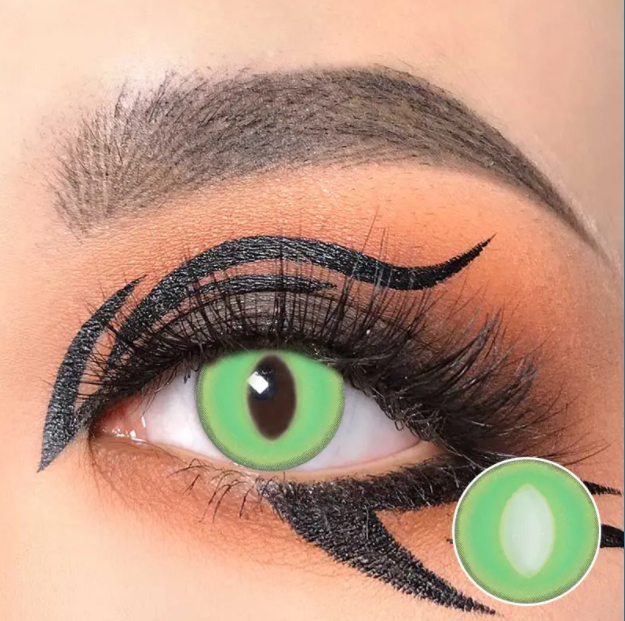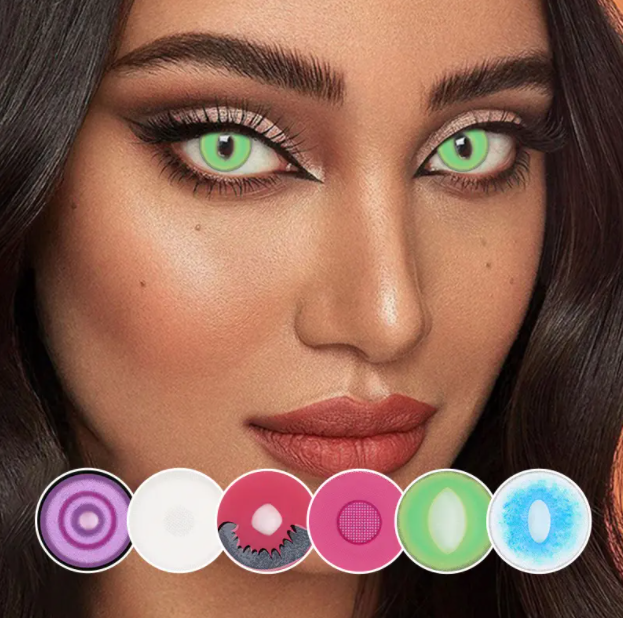The rarest eye color in the world is green, less than 2% of the world’s population has this color. Eye color is affected by the production of melanin in the iris, which also affects skin color. More melanin makes the eyes darker, and less melanin makes the eyes brighter.
Colored Contacts For Dark Eyes
Yes, eye color is influenced by genetics, but scientists have found that it is more difficult than previously thought. It used to be thought that the predominant eye color was brown and that two brown-eyed parents would have a brown-eyed child. However, the understanding of dominant and recessive genes has changed, as two brown-eyed parents can have a child with lighter eyes, meaning that multiple genes are involved and generations can be skipped.
Eye color can change naturally, but this is often dependent on health conditions, and certain diseases or medications can affect natural eye color.
If you want to intentionally experiment with changing eye color, thanks to the latest developments in contact lenses and color opacity, you can use contact lenses to change your natural eye color. If you’ve always wanted green eyes, changing your natural eye color with green contact lenses has never been easier. If you’re worried that colored contact lenses will look unnatural, don’t worry, the glamorous unnatural colors of the 90s are long gone and thanks to their skyrocketing popularity among celebrities and influencers around the world, availability and affordability. types of colored contact lenses on the market.
Solotica colored contact lenses have been recognized as the most natural colored contact lenses in the world and approved by the FDA. Founded in 1949 and built on their expertise, they combine the latest in contact lens technology with incredible color opacity to provide full iris coverage so no one will know you’re wearing them. Their natural color choices are inspired by Brazilian hues, so you’re sure to find a shade of green that suits you best, from vibrant forest tones to earthy olive tones. If green is not to your liking, change your look to blue, brown, beige and gray! Colored contact lenses for dark eyes have come a long way, so even if you’re looking for bright hues, you can be sure that they will cover up your natural dark circles completely.
New procedures are being developed to permanently change eye color, but they are still mostly experimental and largely unregulated. Many of these procedures can have serious side effects, including vision problems and even blindness. Colored contact lenses are a safer way to check your eye color. Always make sure you are buying lenses from a reputable seller and that your eye doctor has confirmed that the lenses are suitable for your eyes.
The color of a child’s eyes changes as the melanin in the iris develops. Some babies are born with blue eyes, but as melanin production increases, their eyes turn brown. This process usually occurs within a year as melanin moves into the iris, but it can take up to 3 years for a child’s eye color to fully develop.
Gray eyes are also considered very rare, but are more difficult to explain because many gray-eyed people around the world are considered blue-eyed. Gray eyes vary in hue and are usually mixed with blue, but pure gray eyes are extremely rare.
Colored Contacts For Dark Eyes
Brown is the most common eye color worldwide, with 55-78% of the world’s population having brown. Ethnicity also influences this, with dark brown eyes most noticeable in Africa and East and Southeast Asia.
Green is one of the most popular eye colors, partly because it is very rare. If you want to try your hand at green eyes, then we recommend that you try colored contact lenses to transform your eyes into a beautiful shade.
Post time: Jan-10-2023





